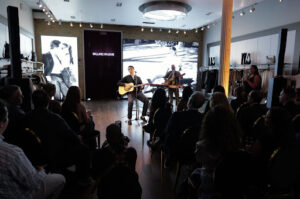The allure of fire has captivated humanity for millennia, and today’s homeowners are rediscovering the magic of incorporating fire elements into their outdoor living spaces. Modern fire features combine safety, functionality, and aesthetic appeal to create gathering spaces that extend the usability of backyards throughout multiple seasons. Understanding the various options and
considerations helps homeowners make informed decisions about these increasingly popular additions.
Understanding Fire Feature Fundamentals
Fire features encompass a wide range of installations, from simple portable fire bowls to elaborate built-in fireplaces. Each type serves different purposes and requires specific considerations regarding placement, fuel sources, and safety requirements. Gas-powered features offer convenience and consistent flame control, while wood-burning options provide traditional ambiance and crackling sounds many people cherish.
The choice between permanent and portable installations depends on lifestyle preferences, budget considerations, and long-term plans for the property. Permanent features typically offer greater design integration and functionality, while portable options provide flexibility for renters or those who prefer seasonal arrangements.
Design Integration and Placement
Successful fire feature integration requires careful consideration of surrounding elements and overall landscape design. The feature should complement existing architecture and landscape themes rather than appearing as an afterthought. Scale relationships ensure the fire feature neither overwhelms smaller spaces nor appears insignificant in larger areas.
Placement considerations include prevailing wind patterns, proximity to structures, and accessibility for maintenance and fuel supply. Safe distances from combustible materials, overhead branches, and neighboring properties must be maintained according to local building codes and manufacturer specifications. Professional consultation often proves valuable for complex installations or when local regulations are unclear.
Safety Considerations and Regulations
Safety represents the paramount concern when planning any fire feature installation. Local building codes and homeowner association regulations may dictate specific requirements for setbacks, construction materials, and ventilation systems. Fire departments often maintain guidelines for residential fire features that homeowners should understand before beginning projects.
Proper ventilation prevents smoke accumulation and ensures complete combustion. Wind screens and spark arrestors protect surrounding areas from flying embers. Regular maintenance schedules keep features operating safely and efficiently. Emergency preparedness includes having appropriate fire extinguishing equipment readily available and understanding proper shutdown procedures.
Fuel Options and Considerations
Natural gas offers convenience and clean burning but requires professional installation of gas lines and appropriate safety equipment. Propane provides similar benefits with greater installation flexibility, though tank storage and replacement present ongoing considerations. Wood burning creates traditional ambiance but requires fuel storage, ash disposal, and more active fire management.
Each fuel type produces different flame characteristics, heat output, and operational requirements. Gas flames offer precise control and instant ignition, while wood fires provide varying flame heights and colors that many find more visually appealing. Hybrid systems accommodate both fuel types, though they require more complex installation and maintenance procedures.
Materials and Construction Methods
Fire feature construction materials must withstand extreme temperatures while maintaining structural integrity and attractive appearance. Refractory bricks line fireboxes to protect surrounding materials from heat damage. Steel components require proper gauges and finishes to prevent warping and corrosion. Natural stone provides excellent heat resistance while offering timeless aesthetic appeal.
Construction methods vary significantly between different feature types and fuel sources. Professional installation ensures proper foundation preparation, gas line connections, and ventilation systems. DIY projects should be limited to simpler installations and always comply with local building codes and safety requirements.
Enhancing Ambiance with Specialized Materials
The visual impact of fire features extends beyond flames themselves to include surrounding materials that reflect light and create atmosphere. Heat-resistant decorative elements add color and texture while maintaining safety standards. Reflective surfaces amplify flame effects, creating more dramatic visual impact from smaller fires.
Fire stones for outdoor spaces offer excellent options for enhancing fire feature aesthetics while providing practical benefits. These specialized materials withstand high temperatures without cracking or exploding, ensuring safe operation over many seasons. Their varied colors and textures create unique visual effects as flames dance across their surfaces.
Maintenance and Seasonal Care
Regular maintenance ensures fire features operate safely and maintain their attractive appearance throughout their service life. Cleaning schedules remove ash, debris, and corrosion that could compromise function or appearance. Component inspections identify wear or damage requiring repair or replacement. Professional servicing for gas systems ensures proper operation and safety.
Seasonal preparation protects features from weather damage during periods of non-use. Covers prevent water accumulation and debris buildup. Proper storage of portable components extends their lifespan. Spring startup procedures ensure safe operation after extended dormancy periods.
Economic and Property Value Considerations
Fire features represent significant investments that often increase property values while providing immediate enjoyment benefits. Quality installations using durable materials and professional construction typically offer better long-term value than budget alternatives. Operating costs vary significantly between fuel types and usage patterns.
Insurance considerations may include policy adjustments for permanent installations or liability concerns for portable features. Some insurance companies offer discounts for professionally installed features with proper safety equipment. Understanding these implications helps homeowners make informed decisions about feature types and installation methods.
Creating memorable outdoor experiences through thoughtfully designed fire features requires balancing safety, functionality, and aesthetic appeal. These installations transform ordinary backyards into extraordinary gathering spaces that extend outdoor living seasons and create lasting memories for family and friends.






